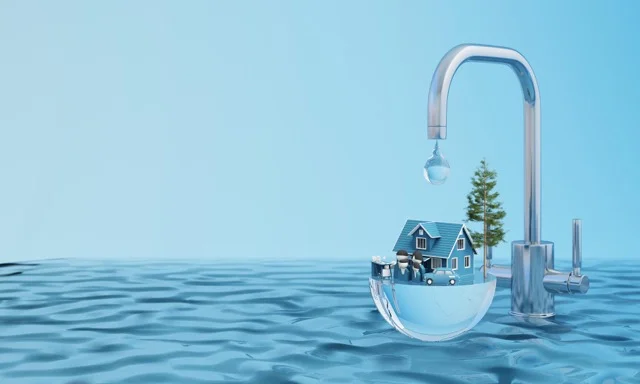Reclaim Waste for Beginners
Reclaim Waste for Beginners
Blog Article
An Unbiased View of Reclaim Waste
Table of ContentsWhat Does Reclaim Waste Do?More About Reclaim WasteReclaim Waste - An OverviewReclaim Waste Fundamentals ExplainedThe Facts About Reclaim Waste Revealed
Discover the types, incidents, and forms of fluid waste. Domestic sewage waste refers to the waste and products from a residential septic container. This sort of waste is developed by people in residences, institutions, and various other buildings. This only consists of septic tanks that have a drainpipe area. The proper monitoring and disposal of domestic sewer waste require liquid waste to be transferred to a sewage therapy plant where the correct methods and devices are used to detoxify and take care of waste.
Business waste often consists of potential hazards, such as flammable products or a blend of fluid and strong waste items, and requires an advanced and in-depth disposal process. The disposal of commercial waste usually entails the filtering of waste before transportation to make certain risk-free and correct disposal. Hazardous waste is developed from byproducts and overflow of commercial processes and production.
This kind of waste can not make use of the same sewer management transportation or processes as septic or business liquids. The hazardous waste management procedure needs the inspection and screening of fluid waste before it undertakes the disposal procedure (liquid waste removal). Overflow waste is the liquid waste that originates from drainage and excess stormwater in highly populated locations or cities
Overflow waste can create contamination and flooding if not dealt with effectively. Ensuring proper waste management can protect against catastrophes and decrease ecological harm.
Some Known Facts About Reclaim Waste.
Get in touch with PROS Services today to find out about our waste management and disposal solutions and the appropriate methods to look after the fluid waste you produce.
(https://www.pubpub.org/user/leon-aube)Do you know what takes place to your water when you draw the plug, purge the toilet or drain the cleaning machine? No? Well, it's worth knowing. This supposed 'wastewater' is not just a crucial resource but, after therapy, will certainly be launched to our land, waterways or the sea. Utilized water from bathrooms, showers, bathrooms, kitchen sinks, laundries and commercial processes is recognized as wastewater.

water utilized to cool equipment or tidy plant and equipment). Stormwater, a type of wastewater, is overflow that streams from agricultural and city areas such as roof coverings, parks, yards, roadways, paths and gutters into stormwater drains, after rainfall. Stormwater moves unattended straight to regional creeks or rivers, at some point getting to the ocean.
The 7-Minute Rule for Reclaim Waste
In Queensland, a lot of wastewater is dealt with at sewer treatment plants. Wastewater is transferred from domestic or commercial websites through a system of sewage systems and pump terminals, understood as sewerage reticulation, to a sewage treatment plant.
The Division of Natural Resources encourages city governments concerning managing, operating and keeping sewerage systems and therapy plants. In unsewered areas, neighborhood federal governments may need householders to set up private or household sewer therapy systems to deal with domestic wastewater from bathrooms, kitchens, restrooms and laundries. The Division of Natural Resources authorises using house systems when they are verified to be reliable.
Most stormwater gets no treatment. In some brand-new subdivisions, treatment of some stormwater to eliminate clutter, sand and crushed rock has actually begun making use of gross contaminant catches. Wastewater treatment occurs in 4 stages: Gets rid of strong matter. Larger solids, such as plastics and other items mistakenly discharged to sewage systems, are eliminated when wastewater is travelled through displays.
Wastewater then streams into big tanks where solids settle and are eliminated as sludge. Oil and scum are skimmed from the surface area. Utilizes little living microorganisms called micro-organisms to break down and remove continuing to be liquified wastes and great bits. Micro-organisms and wastes are included in the sludge. Gets rid of nitrogen and phosphorus nutrients that might create algal blooms in our waterways and endanger water life.
The 45-Second Trick For Reclaim Waste
Nutrient removal is not readily available at all sewer therapy plants since it calls for pricey specialized devices. Clear fluid effluent generated after treatment might still have disease-causing micro-organisms - liquid waste disposal.

This typically implies wastewater needs to be dealt with or contaminants eliminated before it can be discharged to waterways. Many wastewater moves right into the sewerage system. Under the Act, regional federal governments administer authorizations and permits for eco pertinent activities (Periods) entailing wastewater releases that may have a regional impact. The division provides approvals and permits to Ages including wastewater launches that might have a regional or statewide impact.
All about Reclaim Waste
Or else, examples are taken for laboratory analysis. Usually several examinations are required to develop the levels of each of the different toxins such as oils, heavy steels and pesticides in water. Surveillance offers factual details regarding water quality and can verify that licence conditions are being met. The information obtained via tracking offers the basis for making water top quality choices.
Report this page